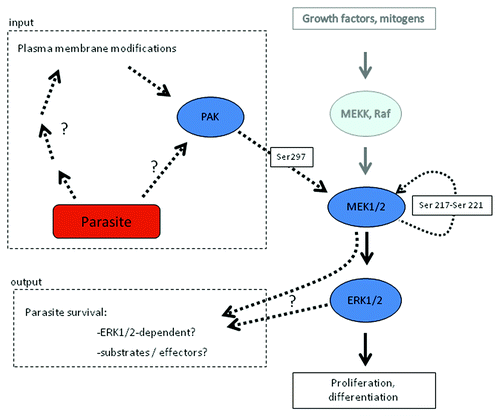Figures & data
Figure 1. Hijacking of the host erythrocyte MAPK pathway by the malaria parasite Plasmodium falciparum. Infection of the erythrocyte by P. falciparum results in the activation of a PAK-MEK pathway in the host cell. To the right, the canonical MEKK-MEK-MAPK is depicted. As indicated to the left, parasite infection results in PAK activation, through mechanisms that remain to be elucidated. This leads to PAK-dependent phosphorylation of MEK1 on S298, an event known to cause auto-phosphorylation of MEK1 on its activation loop (Ser 217-221), and hence activation of MEK1. The effectors of the pathway also remain to be determined, although it is known that interference with PAK or MEK function blocks parasite development. See text for details.
